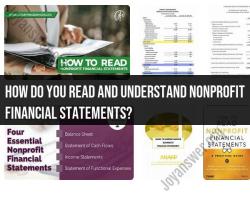What are the types of derivatives?
Derivatives are financial instruments that derive their value from an underlying asset or reference point, such as a commodity, currency, interest rate, or stock index. They are used for various purposes, including hedging against price fluctuations, speculating on future price movements, and managing financial risk. There are several types of derivatives, and they can be categorized into four main groups:
Forward Contracts:
- A forward contract is a customized agreement between two parties to buy or sell an underlying asset at a specified future date (the maturity date) for a predetermined price (the forward price). These contracts are usually traded over the counter (OTC) and are not standardized.
Futures Contracts:
- Futures contracts are standardized agreements to buy or sell an underlying asset at a specific future date and price. They are traded on organized exchanges and are highly liquid. Common futures include commodity futures (e.g., oil, gold), financial futures (e.g., stock index futures), and interest rate futures (e.g., Treasury bond futures).
Options:
- Options provide the holder with the right (but not the obligation) to buy (call option) or sell (put option) an underlying asset at a predetermined price (the strike price) within a specified time frame (the expiration date). Options can be used for hedging or speculative purposes. There are two main types of options:
- Call Options: Give the holder the right to buy the underlying asset.
- Put Options: Give the holder the right to sell the underlying asset.
- Options provide the holder with the right (but not the obligation) to buy (call option) or sell (put option) an underlying asset at a predetermined price (the strike price) within a specified time frame (the expiration date). Options can be used for hedging or speculative purposes. There are two main types of options:
Swaps:
- Swaps are derivative contracts in which two parties agree to exchange one set of cash flows or financial instruments for another over a specified period. Swaps are used for various purposes, including managing interest rate risk, currency exchange rate risk, and credit risk. Common types of swaps include:
- Interest Rate Swaps: Exchange fixed-rate and floating-rate interest payments.
- Currency Swaps: Exchange one currency for another, often to manage currency exposure.
- Credit Default Swaps (CDS): Provide insurance against the default of a specific bond or loan.
- Swaps are derivative contracts in which two parties agree to exchange one set of cash flows or financial instruments for another over a specified period. Swaps are used for various purposes, including managing interest rate risk, currency exchange rate risk, and credit risk. Common types of swaps include:
Additional types of derivatives and derivative-like instruments include:
Options on Futures:
- These are options contracts where the underlying asset is a futures contract. They allow investors to speculate on or hedge against future price movements in a futures contract.
Structured Products:
- Structured products are custom-built financial instruments that combine derivatives with traditional securities. They are designed to provide specific risk-return profiles tailored to investors' needs.
Exotic Options:
- Exotic options are non-standardized options with complex features and payoffs. Examples include Asian options, barrier options, and lookback options.
Binary Options:
- Binary options are a type of option with a fixed payout if the underlying asset reaches or exceeds a predetermined price level at or before expiration.
Convertible Bonds:
- Convertible bonds are corporate bonds that can be converted into a specified number of common stock shares at the bondholder's discretion. They combine elements of both debt and equity.
Caps and Floors:
- Caps and floors are options on interest rates. Caps set a maximum interest rate, while floors set a minimum interest rate, providing protection against rate fluctuations.
Derivatives play a significant role in modern financial markets, offering investors and businesses tools to manage risk and speculate on price movements. However, due to their complexity and leverage, they also carry inherent risks, and users should have a solid understanding of how derivatives work before trading or investing in them.
Exploring the Various Types of Derivatives in Finance
Financial derivatives are contracts that derive their value from the underlying asset, such as a stock, bond, commodity, or currency. Derivatives can be used to hedge risk, speculate on future prices, or gain exposure to a particular asset class.
Here are some of the most common types of financial derivatives:
- Futures contracts: Futures contracts are legally binding agreements to buy or sell an asset at a predetermined price on a future date. Futures contracts are traded on exchanges and are used to hedge risk and speculate on future prices.
- Options contracts: Options contracts give the holder the right, but not the obligation, to buy or sell an asset at a predetermined price on or before a future date. Options contracts are traded on exchanges and are used to hedge risk and speculate on future prices.
- Forwards contracts: Forward contracts are similar to futures contracts, but they are not traded on exchanges and are typically customized to meet the needs of the two parties involved. Forwards contracts are used to hedge risk and speculate on future prices.
- Swaps contracts: Swaps contracts are agreements to exchange two different cash flows over time. Swaps contracts are often used to hedge risk and gain exposure to a particular asset class.
A Comprehensive Guide to Financial Derivatives and Their Uses
Financial derivatives can be used for a variety of purposes, including:
- Hedging risk: Derivatives can be used to hedge risk by offsetting exposure to an underlying asset. For example, a farmer might use a futures contract to sell their crop at a predetermined price in the future, regardless of the market price at that time.
- Speculating on future prices: Derivatives can be used to speculate on future prices of underlying assets. For example, an investor might buy a futures contract on a stock if they believe that the price of the stock will go up in the future.
- Gaining exposure to a particular asset class: Derivatives can be used to gain exposure to a particular asset class without having to invest directly in the underlying asset. For example, an investor might buy a swap contract that gives them exposure to the performance of the S&P 500 index without having to buy individual stocks in the index.
Risk Management Strategies with Different Types of Derivatives
Different types of derivatives can be used to implement a variety of risk management strategies. For example, a company might use a futures contract to hedge against the risk of rising raw material prices. Or, an investor might use an options contract to protect themselves against the risk of a decline in the stock market.
It is important to note that derivatives are complex financial instruments and can be risky. Before using derivatives, investors should carefully consider their investment objectives and risk tolerance.
Here are some examples of how derivatives can be used for risk management:
- A company with a large exposure to foreign exchange risk might use a currency swap to hedge against the risk of adverse movements in exchange rates.
- An investor with a portfolio of stocks might use stock options to protect themselves against the risk of a decline in the stock market.
- A bond investor might use interest rate swaps to hedge against the risk of rising interest rates.
It is important to note that derivatives are not a silver bullet for risk management. They are complex instruments and should be used with caution. Investors should carefully consider their investment objectives and risk tolerance before using derivatives.
If you are considering using derivatives, it is important to consult with a qualified financial advisor.











